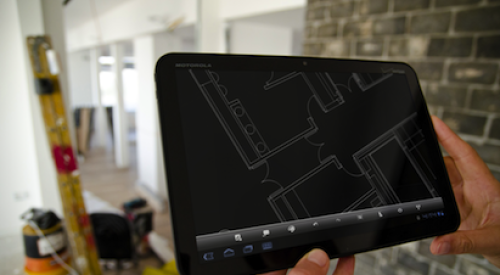Managing a household of a family of four (like mine) is more complicated than it looks. There are schedule conflicts, disagreements to negotiate, transportation to arrange, bills to pay and activities to manage. Now imagine that same household operating with four occupants who each speak a different language. Crazy, right? Each person would need his or her own translator, and every translator would have to speak all the other occupants' languages.
Now imagine a home building business where the departments can't share information and where each department needs a translator to speak to any other department. It's ridiculous, isn't it? Yet this is what many home builders go through every day. Sales can't directly “speak,” i.e. share data with, accounting, job superintendents can't authorize payment for work completed, scheduling can't talk to anyone, and accountants are left screaming in a language nobody understands. Translators, in the form of man-hour or custom data-migration software, are required to move data from silo to silo.
Allowing each department to work on its own software with independent data proliferates “versions of the truth” and causes havoc when it comes time to sort out what was ordered, who was paid by whom, for what house, at what time and for what price. Wouldn't it be better to have one version of the truth, with every department working from one single database?
Stepping Up to IntegrationLet's look at a before-and-after real-life case study of a builder who initially had a few software systems and paper-based systems that he converted — with impressive results — to an integrated system that has had a dramatic return on investment. I will keep the builder's name confidential, but if you want to follow up, contact me directly.
This builder puts up homes in a Texas metro market. In 2005, the company put up 69 starts using 3 models and obtained land options to nearly double that number in 2006, using five models. The team had been running QuickBooks Pro and Excel to perform all its front- and back-office business functions such as sales, management of job site superintendents, estimating, workflow management/scheduling, work orders, accounts receivable/accounts payable, change orders/variances, warranty management and general ledger accounting. But if the sales department received a change order, QuickBooks Pro and Excel needed a “translator” to create a work order and purchase order and make sure everything took place — that pricing was right, job expense was properly allocated, the superintendents updated, the subs alerted, the payment authorized, and the proper client billed — with complete reconciliation back to the general ledger.
In one fell swoop, with the implementation of an integrated accounting system and a process management system, the builder went from QuickBooks Pro, Excel and lots of wasted time and paper to an entirely integrated, paperless, invoice-free, checklist-driven purchase order system that the builders' superintendents can drive wirelessly from the field using a BlackBerry. With this workflow management approach, the builder immediately saved two full-time equivalents (FTEs). The company has achieved even more “staffing avoidance,” as the firm was well-positioned to flex in size, easily getting larger or smaller in response to market demands.
Before integrated software was installed, the builder's superintendents had the power to inspect the property and approve payments of work and materials. But they had to submit these changes on pieces of paper. Data had to be reentered at the office, and they had no schedule tracking — just static Excel cells that were not fully integrated to QuickBooks Pro.
After the installation of integrated software, the builder was able to preload schedules, checklists and sub-checklists that drill down to such specifics as “painter removed tape from windows” on its superintendent's BlackBerry. Now, upon work-stage or job completion approval, the super signs off, and that wireless signal triggers schedule updates, messaging, accounting updates and payment, all linked to one database. And the builder did not incur the cost of custom code to get this done.
The Effect on the Bottom LineAfter the integration, the builder's net margins immediately moved up to 5 percent, and that doubled to 10 percent in 2006 with just the technology implementation. To figure out the savings in dollars, that 10 percent is saved on a gross of $16.7 million gross, with 69 starts and 3 models. That year, the builder booked $20 million on 120 starts and 5 models and started three communities that yielded a gross of $35 million in 2007. The jury is still out on 2008 numbers.
Today the builder runs a totally paperless, automated invoice to purchase order work order system. The team even looks at invoices, because the costs/work are pre-authorized when a bid is accepted; invoices are often paid before they're received. And the vendors love them.
The return on technology investment in impressive: net to net margins were driven from 5 percent to 10 percent in the first 18 months of full implementation, giving a return on investment of net-net 5 percent on $16.7 million gross (software and consulting cost around $100,000). Savings will compound year-on-year.
| Author Information |
| Tom Gebes is widely recognized as one of the nation's leading experts on software technology and home building. He is the founder and president of BuilderMT. Contact him at Tom.Gebes@BuilderMT.com. |











